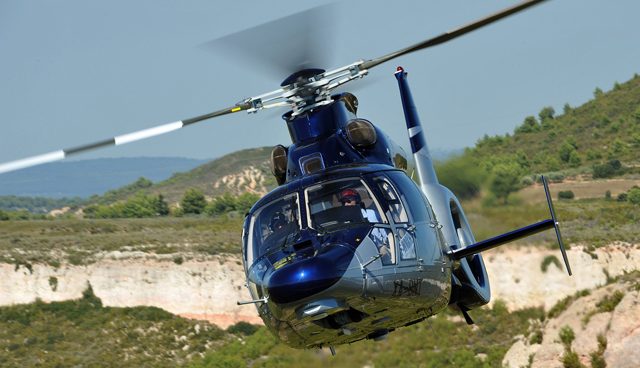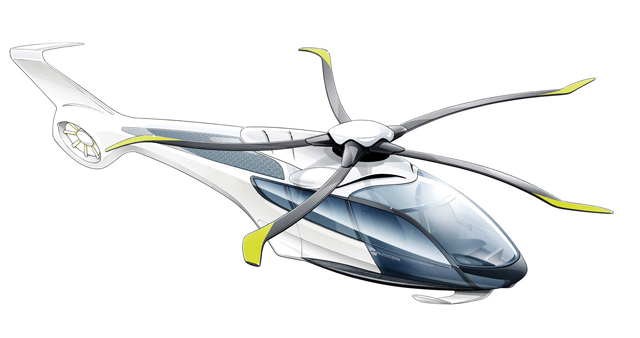On 3 March, in Orlando, Airbus Helicopters will finally reveal the future of its medium-class rotorcraft. Work on the new model – known so far only by its experimental designation of X4 – has been under way since at least 2010, but there is still little clarity as to what the helicopter looks like or what specifications it will boast.
There is no doubt that the X4 is badly needed, however. It is destined to replace the AS365 and EC155 Dauphin family of medium twin-engined helicopters, which have been selling modestly recently.
Flightglobal’s Ascend Fleets database records deliveries of both types as having slumped over the past 10 years. It is an issue partly of age – the original AS365 made its first flight some 40 years ago, and the EC155 dates from 1999 – and partly of intense competition.
Ascend data shows how quickly sales of the rival AgustaWestland AW139 have outstripped those of the Airbus Helicopters models. It may not be a direct competitor – the AW139 is bigger and heavier, boasting a maximum take-off weight of 6.4-6.8t against 4.5t for the AS365 and 4.9t for the EC155 – but has nonetheless taken market share away from Airbus Helicopters. Last year, for example, the AS365 and EC155 racked up just 28 orders, including 11 for Indonesia’s navy; although better than the 17 sold in the year before that it is some way short of the AW139’s 2014 sales total of 69, according to Ascend.
Analysts are quick to identify where the two Airbus Helicopters types are falling short.

The X4 is designed to replace Airbus Helicopters' modestly-selling AS365 Dauphin rotorcraft
Airbus Helicopters
“The AS365 and EC155 are old designs compared with a lot of the players in the market,” says Ben Chapman, aviation analyst at Ascend’s consultancy arm. “Faced with newer and more capable technology, the demand simply isn’t there from its major markets. [The Dauphin] still has a niche, but aircraft such as the AW139 have taken significant demand away. They are going to need a new design if they intend to continue competing in the segment,” he says.
The airframer is, of course, well aware of the need to replace these models and rejuvenate its moribund sales in the weight class. In interviews, Guillaume Faury, Airbus Helicopters’ chief executive, has frequently alluded to the fact that it is being out-competed by its Anglo-Italian rival. At an Airbus Group investor briefing in 2013, for example, Faury was forced to admit that the company was not capitalising on growth in the civil market for medium-weight helicopters and had “significantly lost ground” against its rivals.
“The Dauphin and EC155 are not competing appropriately – against the AgustaWestland AW139 mainly, but not only,” he said.
That message has been repeated several times over the past 12 months, reinforcing the impression that the airframer has lost ground in a segment it previously dominated, if not lost its way.
It follows that Airbus Helicopters views the successful introduction of the X4 as vital to its ambitions in the medium-weight class. Speaking late last year at another investor briefing, Faury said the new model would help complete its line-up in the segment. Development of the X4, alongside the first delivery of the new EC175 in December 2014, will mean that the airframer will “reinvest completely the segment of medium and light heavies with brand new products”, he said.
It is perhaps this urgency, coupled with the more no-nonsense style that Faury has introduced since he succeeded predecessor Lutz Bertling in May 2013, that has kept the shape of the X4 shrouded in mystery.
Early proposals for the X4 that circulated in 2012 proposed a highly ambitious helicopter featuring an all-new Thales cockpit, advanced rotor blade technology and Sagem-designed fly-by-wire controls.
In fact, at that stage the then Eurocopter was planning to launch two helicopters: initial models featuring more traditional avionics and a later variant, intended to be introduced around five years later, featuring synthetic vision and any number of other high-tech advances. Images of the aircraft showed a dramatically-sculpted fuselage featuring canard-like stabilisers at the front of the helicopter, an enclosed Fenestron tail rotor and a horizontal stabiliser swept out from the top of the vertical fin.
The scope of the programme has since been dramatically reined in. Around six months into Faury’s tenure signs of a more cautious approach began to emerge. At the manufacturer’s annual briefing in January 2014 Faury indicated that the development was still a priority, but suggested that a less complex product was envisaged. By the middle of last year, the scale of change had become apparent.
Gone was the phased approach to introducing an advanced cockpit. In fact, gone was pretty much the entire advanced cockpit. Fly-by-wire controls, explained Faury, would add too much time and complexity – and presumably cost – to a programme that was required to deliver in the relatively short term. Those advances, he argued, would not offer the end-user sufficient benefits to justify the hefty potential downsides.
“Why delay the X4 to wait for fly-by-wire?” Faury said. “Customers are expecting a competitive helicopter – that we can provide with the existing autopilot. We don’t need fly-by-wire. It increases complexity, non-recurring development costs and risks, and the value added for the customers – that’s not very clear.”
And as for planning two clear iterations of the helicopter from the very beginning, Faury was equally dismissive. “We will make one product that is good enough from day one.”

Initial concept sketches were striking
Airbus Helicopters
Not all the advances have been jettisoned, however. The X4 still appears, at least at this stage, to be very much a next-generation helicopter. The majority of the fuselage will be carbon fibre, and sections of early prototypes were fabricated at the company’s composite engineering centre of excellence at Donauwörth in Germany during the summer.
Rotor blades are also composite, featuring the distinctive “hockey stick” shape of Airbus Helicopters’ Blue Edge design. Testing of blade manufacturing techniques has been conducted at the airframer’s La Courneuve facility on the outskirts of Paris.
Flight testing of some dynamic components has been carried out on an EC155 flying testbed, and additional technologies have been taken from the manufacturer’s X3 high-speed compound helicopter technology demonstrator. Avionics will be the new Helionix suite that Airbus Helicopters first introduced on the EC175 and EC145 T2 last summer.
One piece of the jigsaw that seemed to remain in place, however, was the engines. Ever since 2012 the choice came down to a straight fight between Pratt & Whitney Canada’s PW210E and the new Arrano turboshaft being developed by France’s Turbomeca – both listed as units in the 1,100shp (820kW) range.
However, on 18 February the airframer announced that it was ditching the P&WC engine, with only the 1,100-1,300shp Arrano remaining.
Airbus Helicopters says that following a “comprehensive market assessment” it will move the positioning of the X4, “consequently necessitating a significant engine power increase” that would not be available without additional work on the PW210E.
However, the maiden sortie of the X4 may still be with the P&WC engine, given the development timeline of the Arrano.
Patrick Moncoutié, Arrano programme vice-president at the French engine manufacturer, says that it has given a commitment to Airbus Helicopters to accelerate the pace of the new powerplant by around six months. Certification of the engine is likely to be achieved by the end of 2017, ahead of service entry of the X4 in 2018.
Overall, Ascend’s Chapman believes the apparent change of direction to be a positive one. “It’s less about having new technology on board; it’s about bringing to market a new helicopter that’s more efficient and more reliable with longer range and better payload-range capability, with the right-size cabin.”
Work is clearly at a relatively advanced stage on the X4. In his December 2014 address to investors Faury noted that the first prototype had just undergone “power on”. First flight is rumoured to be early this year.
It may seem a relatively short timeline, but given the work that has already been undertaken, the airframer should be in a strong position to deliver on schedule.
That said, it cannot afford any slippages. Further entrenchment of the AW139’s position can only serve to highlight Airbus Helicopters’ lost dominance in the sector. In addition, with the AW169 – billed by some as a “Dauphin killer” – waiting in the wings, time may be running out for the airframer’s former cash cow.
Source: FlightGlobal.com























